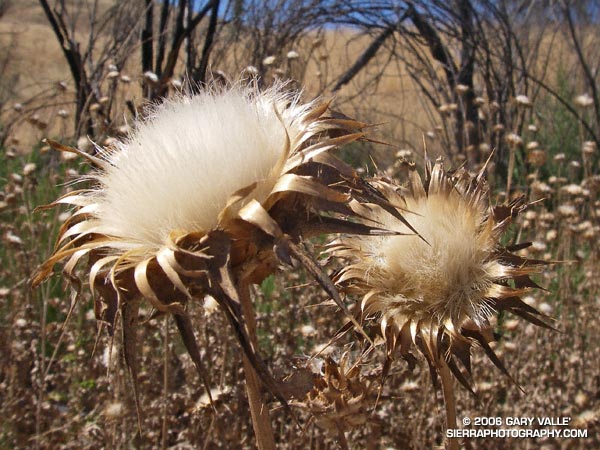
A native of the Mediterranean, Milk Thistle is an invasive weed that appears to be increasingly profuse in roadside areas of Upper Las Virgenes Canyon Open Space Preserve. Generally considered detrimental in the wild, the plant has been used medicinally for at least 2000 years, and is cultivated in Texas, Canada and Argentina.
According to the Washington State Noxious Weed Control Board, Milk Thistle (Silybum marianum) produces about 190 seeds per flower, and over 6000 seeds per plant. Dense stands are reported to produce 1.4 million viable seeds and four tons of vegetation per acre! Here is a closer look at an individual Milk Thistle seed.
This photograph was taken on a run at Ahmanson Ranch on July 13, 2006. The posting Convoluted includes a photograph of the white-veined leaf, and a photo of a dense stand of Milk Thistle in Las Virgenes Canyon. Additional information regarding Milk Thistle, including its history, laboratory studies, clinical trials, and adverse effects can be found in the National Cancer Institute’s Milk Thistle (PDQ®).
